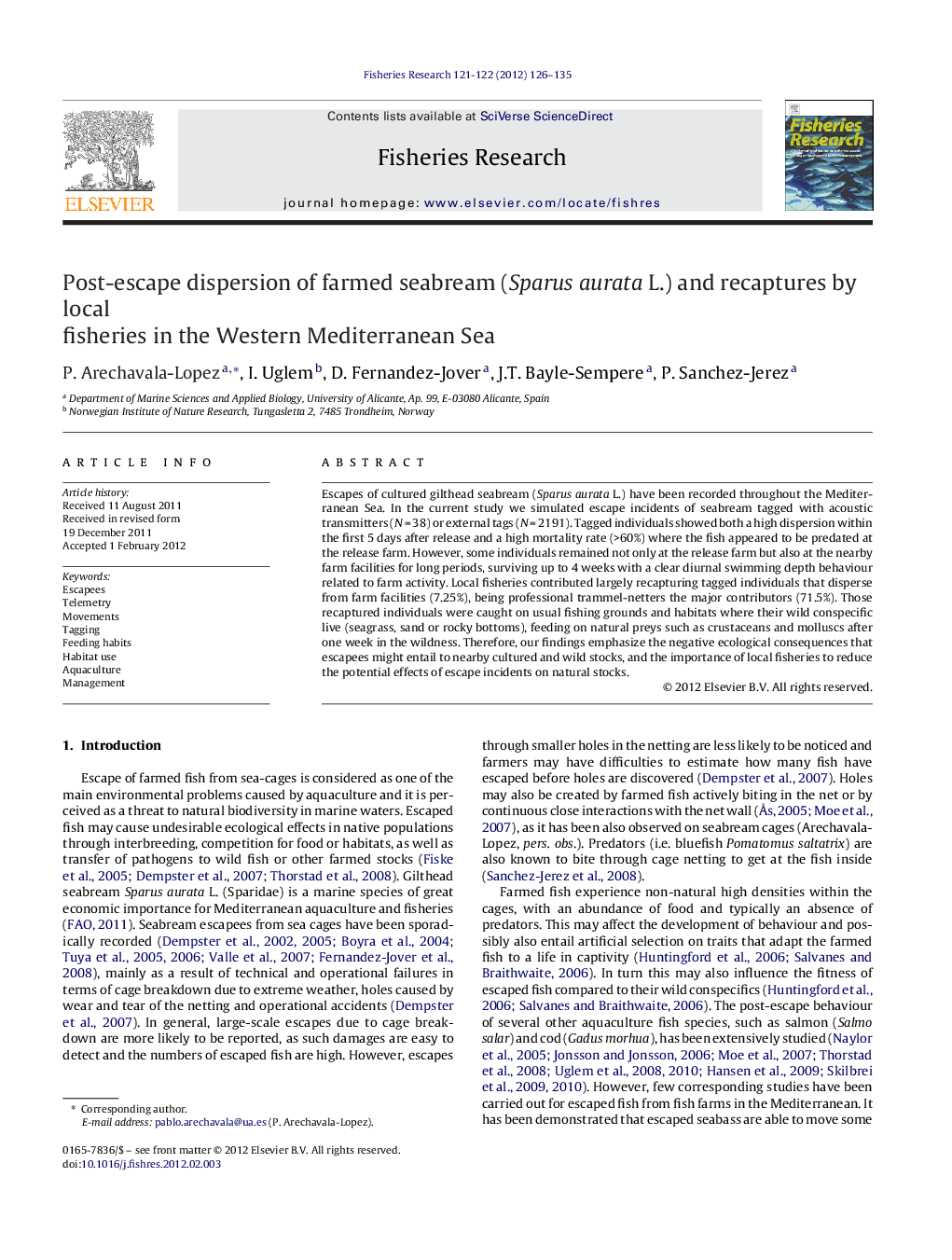| کد مقاله | کد نشریه | سال انتشار | مقاله انگلیسی | نسخه تمام متن |
|---|---|---|---|---|
| 4543376 | 1626838 | 2012 | 10 صفحه PDF | دانلود رایگان |

Escapes of cultured gilthead seabream (Sparus aurata L.) have been recorded throughout the Mediterranean Sea. In the current study we simulated escape incidents of seabream tagged with acoustic transmitters (N = 38) or external tags (N = 2191). Tagged individuals showed both a high dispersion within the first 5 days after release and a high mortality rate (>60%) where the fish appeared to be predated at the release farm. However, some individuals remained not only at the release farm but also at the nearby farm facilities for long periods, surviving up to 4 weeks with a clear diurnal swimming depth behaviour related to farm activity. Local fisheries contributed largely recapturing tagged individuals that disperse from farm facilities (7.25%), being professional trammel-netters the major contributors (71.5%). Those recaptured individuals were caught on usual fishing grounds and habitats where their wild conspecific live (seagrass, sand or rocky bottoms), feeding on natural preys such as crustaceans and molluscs after one week in the wildness. Therefore, our findings emphasize the negative ecological consequences that escapees might entail to nearby cultured and wild stocks, and the importance of local fisheries to reduce the potential effects of escape incidents on natural stocks.
► Cultured seabream escapes from Mediterranean fish farms.
► A great amount of fish was recaptured by local fisheries once they disperse from the farming area.
► These escapees were able to swim to natural grounds where their wild conspecifics live.
► Moreover, they were able to feed on natural preys after 5 days in the wildness.
► The study emphasizes the ecological consequences of escapees on nearby cultured and wild stocks.
Journal: Fisheries Research - Volumes 121–122, June 2012, Pages 126–135